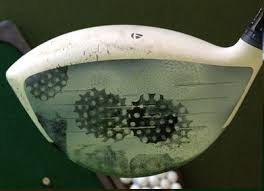When we watch Dustin Johnson hammer a driver 300 yards up the center of a fairway, we imagine how we can make the same shot. It’s a great feeling when you dream about it but you better get back to reality before your next swing or your ball will be headed into Never Never Land. Learn to ‘tune your game back and make the easy shots within your ability’.
If you spend most days working at a desk or anywhere but swinging a golf club, you need to be realistic before your next adventure on the golf course. “You are You”, not Dustin Johnson or Jason Day. Their game and your game are in 2 different leagues. Body shape, strength, stamina, training and mindset are all different from yours.
You need to set realistic expectation for the swing of each club. Keep your expectations in check and minimize your check points to make more consistent swings. Try these tests:
Takeaway Test: Try a takeaway waggle like Rickie Fowler. Watch for 2 things.
1/ Flat wrist: With a straight leading arm and a wide takeaway, keep your wrist flat and in-line with your arm as you break your wrist sideways and point your club head away from the ground. Practice with GOLFSTR+ to ensure that your wrist is flat.
2/ Rotate, Don’t Shift: In your backswing make sure that you are rotating your shoulders and hips to coil your body (as you load pressure on your trailing foot). DO NOT swaying back in your stance for more power like a baseball player (golf is not baseball)

Rory has a perfect flat wrist position as he lets momentum shift his hips slightly up his target line. He lets his club do the work to whip through impact with his ball. He also finishes in balance on every shot.
Balance Test
In a recent PGA video by PGA Professional Eric Hogge, he offered a tip to help you understand how hard you should swing each club and still hold a balanced finish. He completed a drill called “2 Tees and a Ball”. He placed 2 tees and a ball on a third tee all in a line so that he could hit them in succession. His first swing was at 50% to hit the first tee, then 60% to hit the second tee and finally at 70% to hit the ball. If he was able to hold a balanced finish for 2 seconds, he knew that he was in control. This is great test to understand the speed that is realistic for your swing. DON’T swing as hard as you can.
Body Test
Marin Hall, a trainer on the Golf Channel, reminds us to get our bodies “into the swing”. Don’t just use your arms and fall back when you swing. Don’t rush your swing at the top. As your club reaches the top of your backswing let the momentum of your backswing start the slide of your hips forward as you drop your hands and feel the whip of your club releasing from a wrist lag to impact with your ball.
To clarify: Don’t muscle your club through the swing. Keep your leading arm straight through out the backswing and downswing and feel the whipping action of your club as it releases through impact. Let the weight of your club create the power of your swing.

Adjust your stance and straight arm swing to ensure that you are impacting with your ball in the center of your club face.
Impact Test
Use a powder marker or Dr. Scholl’s spray powder to mark the face of your driver and your irons and figure out where you impact the ball. Adjust your stance and accept the fact that the head of your club may not line up with your ball at address the same way that it does during the swing. (As an amateur golfer, your body will do bewildering changes during your swing. Make adjustments or you will suffer with poor shots.)
Summary
You should be swinging with a straight leading arm and a flat leading wrist. If you don’t learn to do this you will never be able to create a consistent distance to the ball for consistent hits. Practice with GOLFSTR+ for straight arm and straight wrist and lag training. Buy one today at www.golfstr.com



